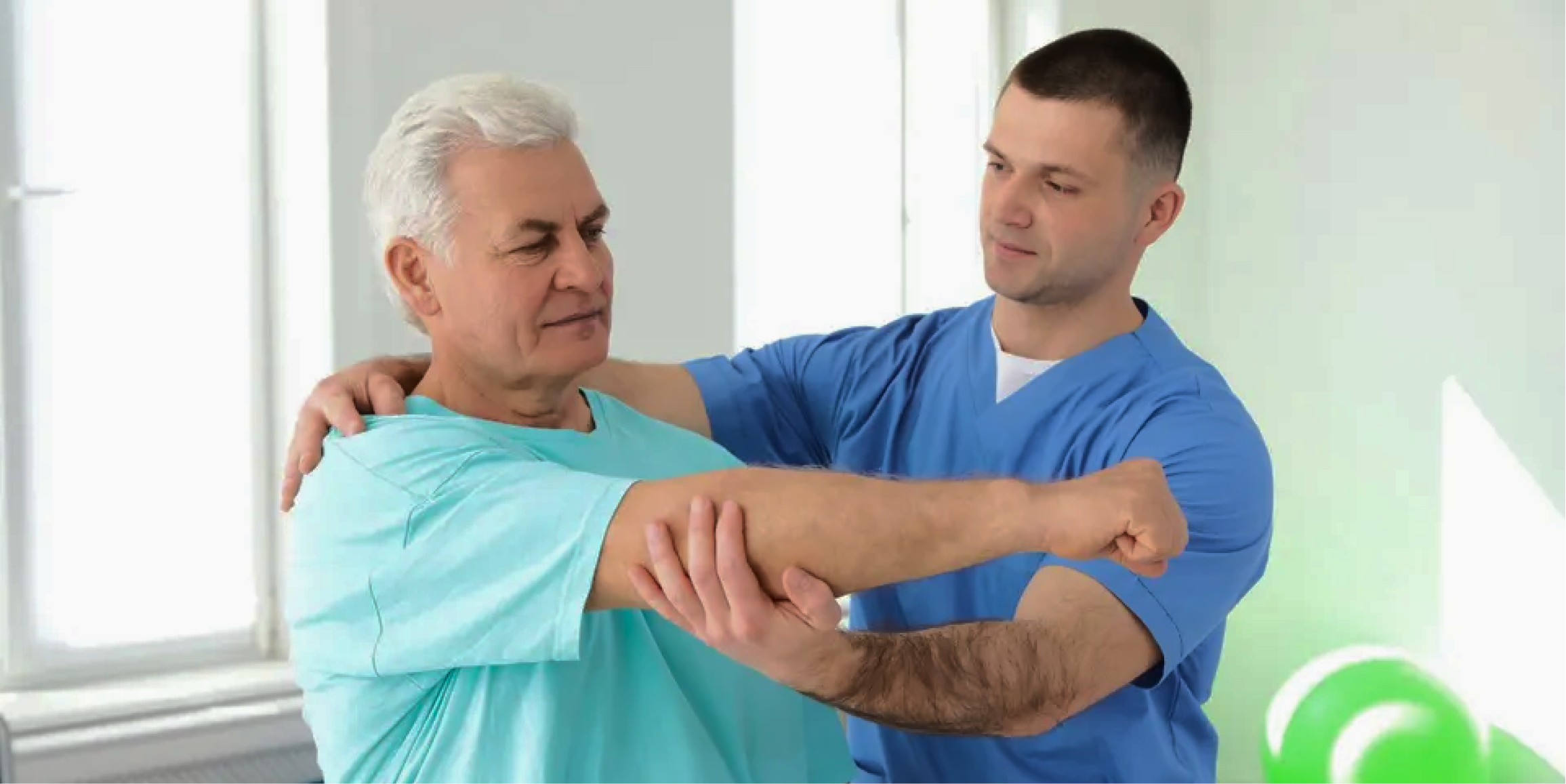According to the World Health Organization, rehabilitation is “a set of measures that assist individuals, who experience or are likely to experience disability, to achieve and maintain optimum functioning in interaction with their environments” (WHO, 2011). Drawing from this definition, neurological rehabilitation is a program that helps patients with neurological conditions recover or increase functionality within their environment. Neurological rehabilitation is important as it improves independence, increases the quality of life, and manages symptoms. Neurological rehabilitation programs are customized to the individual and differ depending on the areas affected by the condition.
How Does Neurorehabilitation Work?
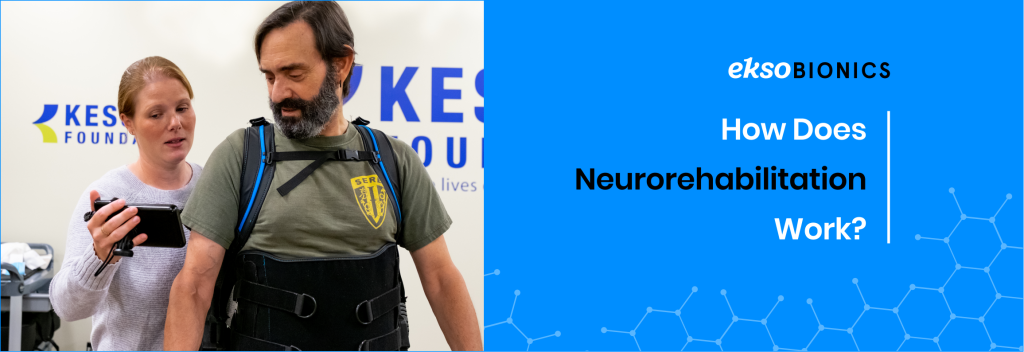
Rehabilitation, in general, is primarily rooted in “neuroplasticity.” Neuroplasticity is the ability of the brain to adapt its activity in response to internal and external stimuli. This may include structural and functional changes. It may also involve changes in neural connections. Neuroplasticity allows the brain to learn new things and adapt to new situations, especially after injuries like stroke or traumatic brain injury (TBI). You see, the brain is not “fixed.” It changes with every experience and impression, meaning that new connections are continuously being formed as we continue learning. This learning and relearning quality is what drives rehabilitation.
The goal of every neurorehabilitation program is to restore health, independence, and functionality as much as possible using the best rehabilitation strategies. While the approach used differs from patient to patient, the steps in the process are very similar. The first step of every program is a comprehensive assessment using specific tests to understand the extent of the injury and the patient’s abilities. These tests are then used to create a treatment plan and are also used to set realistic rehabilitation goals. Once the assessment is complete, rehabilitation begins and continues until the desired results are achieved.
Phases of Neurological Rehabilitation

The neurorehabilitation process is made up of different phases, which are based on the severity of the injury and the patient’s symptoms. Each phase is measured using the Barthel Index (a measure of performance in activities of daily living). The treatment a patient receives is based on the stage they are in within the rehabilitation process.
- Long-Term Acute Care Hospital (LTACH): This is the first level of critical care after inpatient hospital stays. In this phase, patients require intense clinician supervision and management. It normally involves vent management, tracheostomy care, and wound infection care.
- Acute Rehab: In this phase, patients are required to participate in three hours of skilled therapy (PT, OT, speech & language therapy) per day. This is the biggest distinguishing factor between acute rehab and subacute rehabilitation. This phase normally involves shorter stays with the goal of transitioning to home therapy or subacute rehabilitation.
- Subacute Rehabilitation in Skilled Nursing Facilities: In this stage, patients are stable but not independent enough to be in the home setting. They are taken through therapy but are not required to fulfill the rigorous therapy demands of acute rehab. There is less oversight in this stage, with one nurse being assigned to many patients.
- Long-Term Care Facility or Nursing Home: Nursing home care is for patients who aren’t able to receive the necessary care they need at home. These patients require more supervision and help with activities of daily living like eating, bathing, dressing, etc. They do not require thorough care but may require medication management from nurses.
- Home with services: Patients in this phase are more functional and have more independence compared to patients in the other phases. At the same time, they do have home health aids as required.
Conditions That Can Benefit From Neurological Rehabilitation
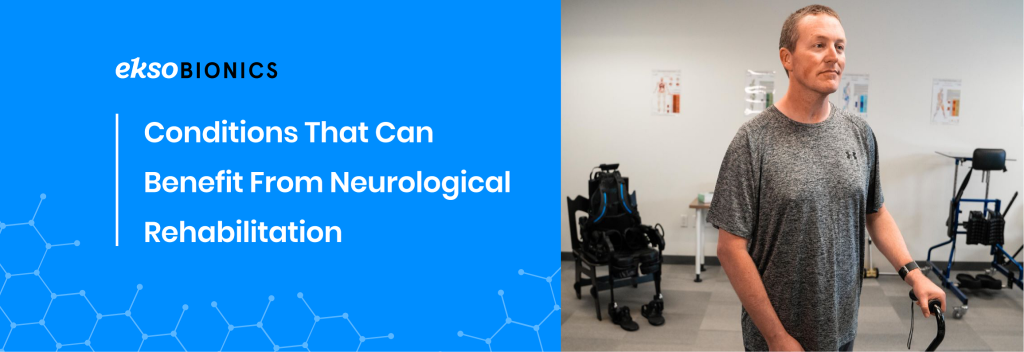
Rehabilitation may be beneficial for neurological conditions like:
- Traumatic brain injuries.
- Spinal cord injuries.
- Hemorrhagic strokes, ischemic strokes, subdural hematoma, and transient ischemic attacks (TIAs)
- Structural or neuromuscular disorders, such as Bell’s palsy, cervical spondylosis, carpal tunnel syndrome, brain or spinal cord tumors, peripheral neuropathy, muscular dystrophy, myasthenia gravis, and Guillain-Barré syndrome
- Functional disorders like headache, seizure disorder, dizziness, and neuralgia
- Brain Infections like polio, meningitis, brain abscesses, and encephalitis.
Neurodegenerative diseases like multiple sclerosis, Alzheimer’s disease, amyotrophic lateral sclerosis (ALS), Parkinson’s disease, and Huntington’s disease.
What Does a Neurological Rehabilitation Program Consist Of?
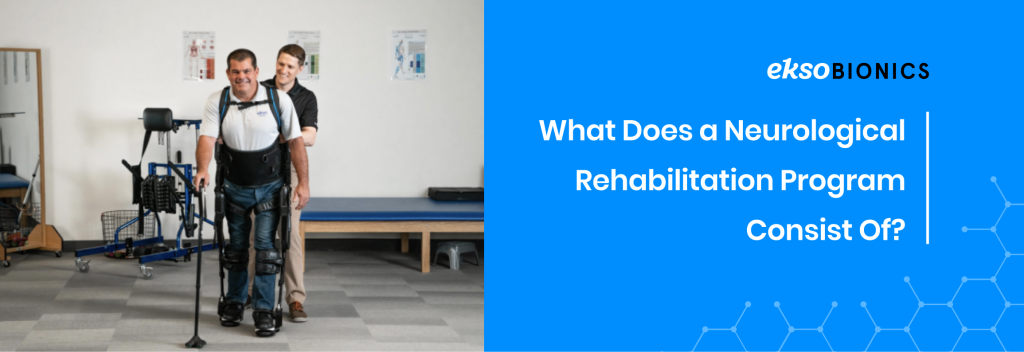
Neurorehabilitation programs are multifaceted and are made up of multiple activities that are customized to a patient based on their condition. Some of the most common activities in neurological rehabilitation programs include:
- Help with activities of daily living (ADLs), such as eating, housekeeping, bathing, writing, cooking, and dressing.
- Stress and depression management techniques.
- Pain management.
- Speech therapy to help with speaking, reading, writing, or swallowing.
- Help with obtaining assistive mobility devices that promote independence.
- Bladder and bowel control retraining.
- Nutritional management and counseling.
- Mobility activities like muscle control, spasticity management, gait training, range of motion, balance, and coordination.
- Cognitive improvement activities that help with problems such as concentration, attention, memory, and poor judgment.
- Social and behavioral skills retraining.
- Patient and caregiver education and counseling.
- Participation in community support activities.
- Vocational counseling.
Who Is a Part of a Neurological Rehabilitation Team?
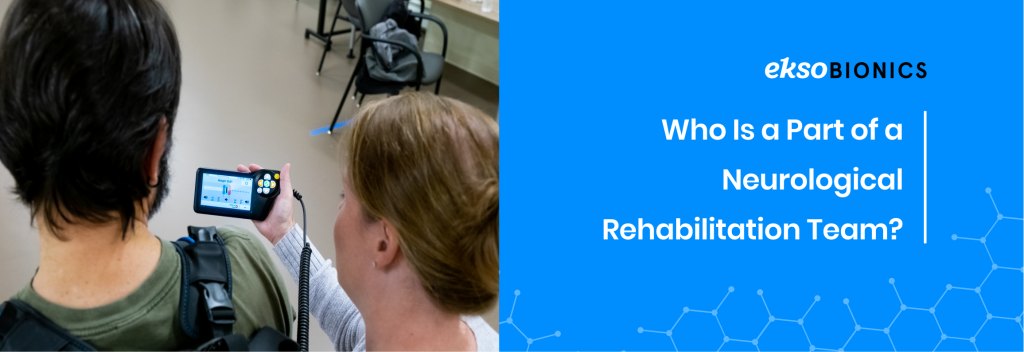
For successful outcomes, neurological rehabilitation teams are multidisciplinary and are made up of different specialists. It is important to note that the rehabilitation team only provides specialized therapy and is different from the patient’s primary care team. Neurorehabilitation teams may include any or all of the following specialists:
- Neuropsychologists – These are specialists who treat patients with cognitive and/or behavioral issues related to brain injury, stroke, or other illnesses. They also work with patients who need help coping and adjusting to changes in their physical capabilities. Neuropsychologists may recommend other treatments like cognitive therapy and stress management.
- Physical therapists – Physical therapists mainly deal with mobility challenges, like range of motion, balance, pain, gait impairment, and coordination. The main goal of physical therapists is to help patients recover mobility.
- Occupational therapists – They are normally involved in helping patients recover their ability to function normally and independently carry out their activities of daily living. They help patients perform activities like dressing, eating, bathing, etc.
- Speech-language pathologists – In case a patient’s speech is impaired, speech-language pathologists help them recover their speaking skills. Loss of speech is common among those who have had a stroke, brain injury, or other changes to the nervous system. Speech-language pathologists also work with patients who have difficulty swallowing.
- Therapeutic Recreation Specialists – These are certified professionals who provide recreational, therapeutic services like swimming, art therapy, and music therapy, among others. They create recreation-centered medical programs for the patient’s emotional, social, and physical well-being.
Aims of Neurological Rehabilitation
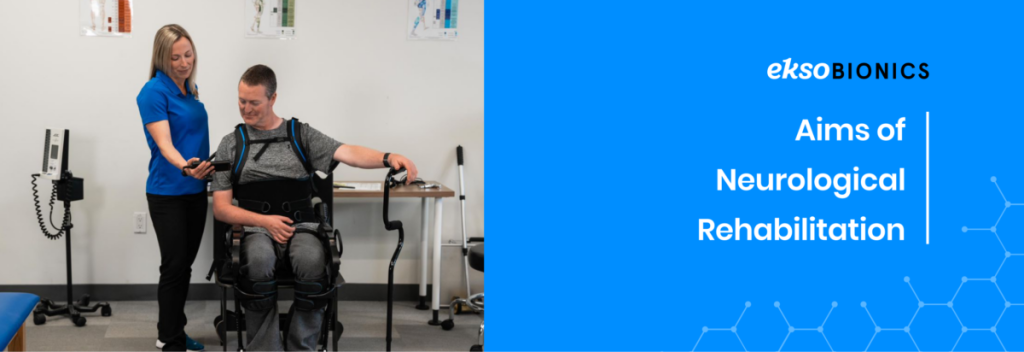
- To prevent complications
Neurological conditions may lead to more complications if left unchecked. The complications can cause a deterioration of the conditions themselves or even be life-threatening in some instances. Secondary complications can also interfere with recovery and curtail rehabilitation. Enrolling in rehabilitation helps prevent these complications and also helps specialists identify them before they become a problem.
- To teach adaptive strategies
One of the main roles of rehabilitation is to teach patients how to function normally and enable them to perform activities of daily living despite their condition. Physical therapists normally assess the patient’s impairment and develop plans on how to help the patient function in their usual environment. Physical therapists may also create strategies to reduce disability.
- To facilitate function in a normal environment
Sometimes, patients are unable to attain premorbid function, necessitating the need for family caregivers and community-based service providers after being discharged from the hospital. Rehabilitation is great for teaching patients and caregivers how to live with new changes, as it can take a lot of mental and physical energy to adapt.
Approaches to Neurological Rehabilitation
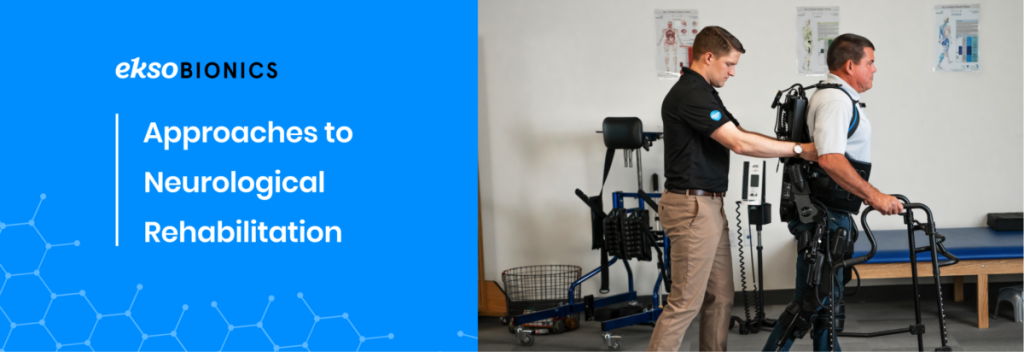
There are a variety of techniques that are used in neurological rehabilitation. They include:
- Bobath approach: Also known as neuro-developmental treatment (NDT), this technique focuses on attempting movement patterns with a physical therapist’s help. This approach relies on motor learning, and the movement patterns are repeated until each component is perfect. Another emerging technique that leans on movement patterns is robotic exoskeletons. According to a 2020 study, they provide a high dose of repetition of movement while improving balance and stability. [1]
- Brunnstrom approach: This technique is a popular movement therapy approach that is used to improve functional movement. It uses a synergic pattern of muscular movements to promote recovery.
- Carr and Shepherd approach: This method is all about functional movements. It involves performing and practicing movements repeatedly and correctly until the desired outcome is achieved.
- Gait re-education: A lot of patients suffer from gait deficiencies after injury, hence the need for gait rehabilitation. A physical therapist normally identifies and corrects any variations that are present during walking. Exoskeletons, which are an emerging technique in gait rehabilitation, can automatically train gait, which reduces a physical therapist’s involvement. They lead to “increased dosing of gait training without increasing the duration of training during acute stroke rehabilitation.” This is important because it helps patients increase their training intensity without additional therapy time. [1]
- Transfer rehabilitation: This method is specifically helpful for patients who are still in the early stages of recovery. It teaches them the techniques they need to perform transfers. For instance, bed-to-chair transfers. The transfer movements are practiced until the patient can confidently perform them.
- Mobility rehabilitation: This is a huge part of any rehabilitation program, and it involves developing ways for a patient to move around independently and safely. It involves exercises like balance exercises, range of motion exercises, and stretches — all of which are intended to help a patient recover their mobility skills.
- Contracture management: Patients tend to have tight muscles and normally need help releasing the strain in their lower limbs for proper recovery. Some of the common contracture management strategies used include: splinting, weight bearing, and casting.
- Equipment and adaptations assessment: After an injury, assistive mobility devices like wheelchairs and walkers may be recommended to facilitate independence. Physical therapists normally provide these recommendations during the rehabilitation process. Read more about mobility devices that are recommended for patients recovering from a stroke.
Conclusion
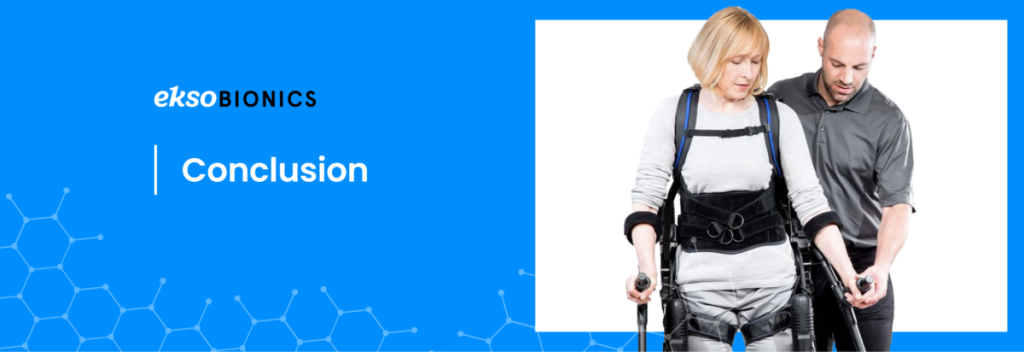
Neurological rehabilitation is an integral part of recovery that cannot be done alone. With the help of family, friends, community, and the medical team, patients can recover from their injuries and learn how to reintegrate into society.
Ekso Bionics is committed to creating rehabilitation exoskeleton technology that helps patients walk again, and in the last ten years, our efforts have led to thousands of happy patients and physical therapists. Ekso Bionics has a global footprint, with our medical exoskeletons being used in over 400 centers worldwide. If you’d like to learn more or talk to us, visit our contact page, and we’ll get in touch with you shortly.
Reference:
- Robotic Exoskeleton Gait Training During Acute Stroke Inpatient Rehabilitation – PMC https://www.ncbi.nlm.nih.gov/pmc/articles/PMC7661791/
